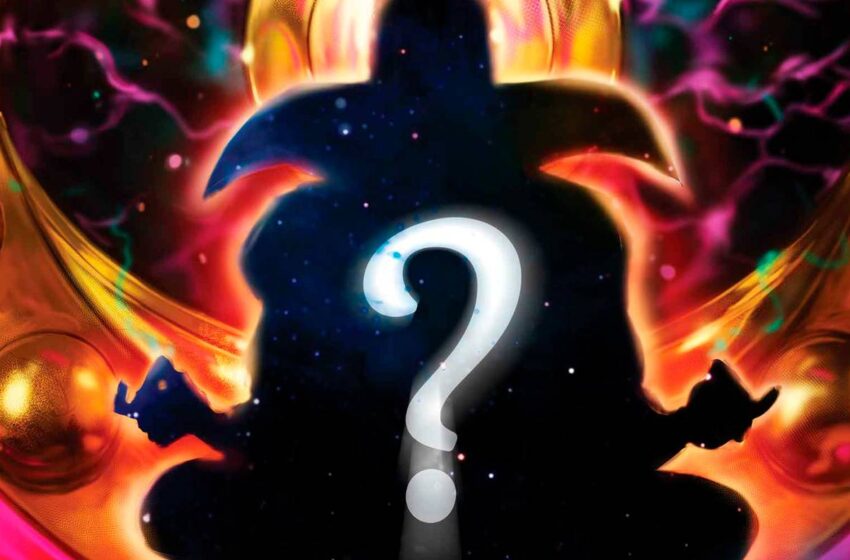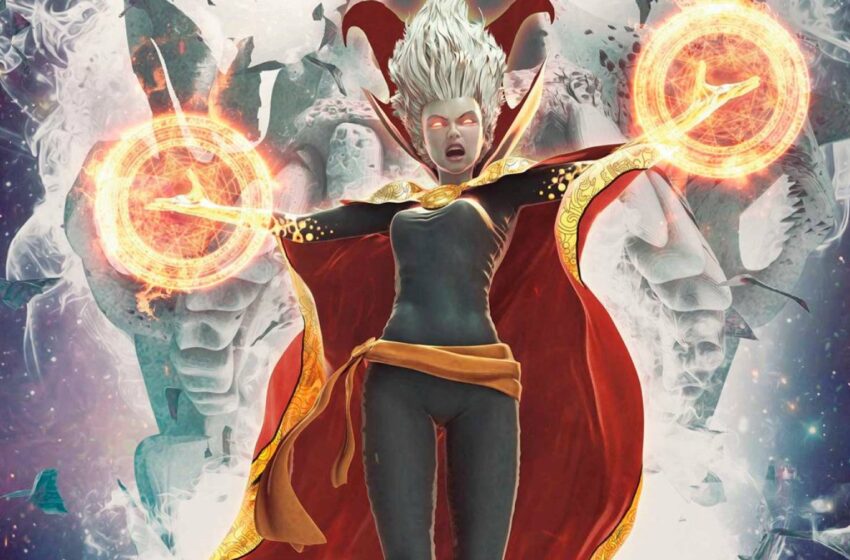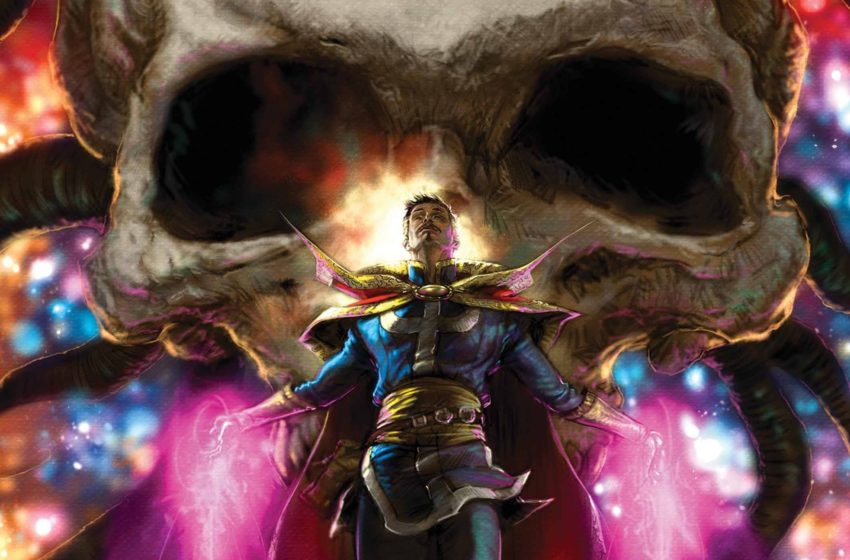Every good whodunnit’s got a parlor scene, to let the detective put all the players and clues together to reveal who the murderer is. Ersatz detective and former (in more ways than one) Doctor Strange has finally solved his own murder—but has he done it in time to save the world from the destruction his death began? The Death of Doctor Strange #4, written by Jed MacKay, drawn by Lee Garbett, colored by Antonio Fabela, and lettered by Cory Petit.
I do not care for the lore of Doctor Strange.
This is perhaps not the best way to start a review for an issue of an event centered around the man. What the hell, Armaan, you volunteered for this, I hear the voice of my editor saying. Bear with me, this is relevant.
(Fine, says the voice of my editor, but I do not appreciate you putting words in my mouth for the sake of a bit!)
See, I’ve been following Doctor Strange’s comics pretty regularly starting with the Jason Aaron run back in 2015, and it feels like the writers don’t care too much for Strange’s long history either. Everyone seems to be trying to reinvent him—what if Strange’s every spell came at a terrible cost? What if Strange didn’t have his magic anymore? What if he drew on his own magic? What if he wasn’t the Sorcerer Supreme? What if he got his hands back? What if he was played by Benedict Cumberpatch and was the most haunting part of Disney+’s What if…?
And here we are now – what if he was just dead?
The Death of… events are meant to celebrate a character’s long legacy just before saying a (generally temporary) farewell to them. The first issue did a great job of looking at where Doctor Strange is, and this issue seems to be focusing a little more on where he’s been, as he brings in a number of people who may have had a hand in (or who took two while causing) his death. Classic Strange allies and foes—Clea, Mordo, Kaecilius, warlords I’ve never heard of before this day. In a typical story of this genre, this would be the point where my curiosity is roused. It usually doesn’t take much to send me down a rabbit hole of old issues and Wikipedia entries, catching me up to the backstories and major milestones of characters who are all part of a hero’s grand tapestry.
I felt none of that here in The Death of Doctor Strange #4. All I saw was a room full of pompous people – Strange included – throwing about fancy titles and empty bravado in the desperate hopes of appearing as important and powerful as they wish they were. And oh my god, it is delightful.
There is a stuffiness to Doctor Strange. All the ritual incantations, the melodramatic speeches, the heavy-laden portents of doom—this man, his foes, and friends alike have turned standing on ceremony into a literal superpower. Tradition turned to power turned to an endless fountain of pride, no matter how poisoned the source may be. What we’re getting here, though, in this issue especially, is a very entertaining examination of what happens to proud people when they have nowhere to run.
We see it in Baron Mordo, framed for a murder he dearly wanted to but wasn’t able to commit, at first hiding from the vengeful ghost of his worst enemy. For all his bravado, Lee Garbett draws us the figure of a coward, hiding from what he truly believes may be the end of him. It is in that end he finds strength—he opens the door, faces Strange, and lets him know that if Baron Mordo truly did kill Strange, then there is no way he would lie about it.
It’s not Mordo’s finest moment. There’s no honor here, only truth. He’s willing to risk his life on that truth; that in the end, he would choose incredible pettiness over life itself. It’s comedic, yes—but also touchingly sincere. When the chips are down, Mordo will hold on to that idiotic truth, and there’s a power in that that lets him hold his head high.
With Mordo eliminated as a murder suspect, however, Strange loses his last hope. There’s an unbeatable monster from realms beyond seeking to end all magic and those who would channel it. His murderer is still on the loose, as well as his older self’s stolen hands and soul, preventing a new Sorceror Supreme from being chosen and putting an end to this mess. The world depends on him solving this mystery, and he doesn’t even know where to begin, and his sense of hopelessness really comes through on the page.
Garbett matches Jed McKay’s storytelling style perfectly – balancing comedy with emotional sincerity. I can’t say I relate to the situation, but I felt the hopelessness of a ghost from the past trying to make sense of a life he’s never going to get to live. Knowing he has days left to exist, one chance to fix his older self’s failings but having none of Older Strange’s knowledge to work with. The pressure, the pain, the hopelessness – and that’s not even counting the grief he must be repressing at the knowledge of his own death.
A moment of comfort from his ghost dog gives him the peace he needs to finally clue everything together, drum up a plan and bring everyone together for the final reveal. Strange isn’t just a magician, after all—he’s a showman. The murderer is someone with motivations as petty as Mordo’s would have been—as anyone of Strange’s cast would have been. To me, it doesn’t matter who the murderer is—what matters is that Strange’s ethereal pet comforted him and gave him the strength to win the day.
I do not care for these people or their histories. The Death of Doctor Strange, though, has hooked me into its story by making them all truly vulnerable, and by having its protagonist show that vulnerability on-page. Death is inevitable, and in this event, no one is more aware of that than Doctor Strange himself. The Death of Doctor Strange #4 puts all the weirdness aside for a moment and lets him grapple with that, and that’s the thing that makes this story worth reading.





